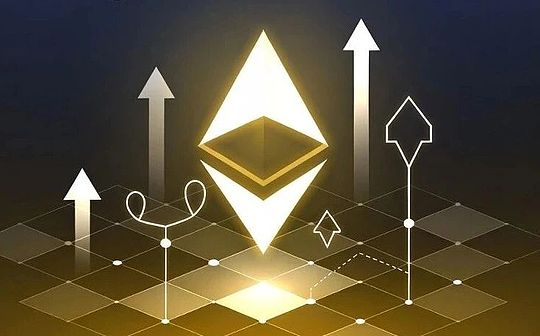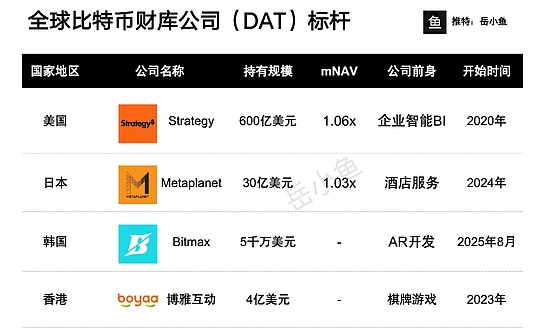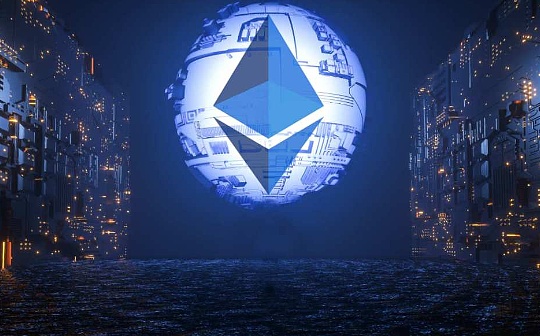
Author: Ethereum Foundation Agreement Support Team; Translation: Bitchain Vision xiaozou
The Ethereum Pectra upgrade is scheduled to be activated on the Ethereum main network epoch 364032 (UTC time 10:05:11).
1. Introduction to Pectra
Pectra is a major update following the Dencun upgrade last year.It enhances the Ethereum account system, improves the validator experience, supports L2 expansion, etc. by introducing new features!
These three major improvements will be discussed in detail in this article.For a full understanding of upgrades, see ethereum.org’s upgrade guide.
(1) From an external account (EOA) to a smart account
EIP-7702 marks an important step in the account abstraction process, allowing users to add smart contract functionality to external accounts (EOA).
This hybrid solution combines the simplicity of EOA with the programmability of contract accounts.Specifically, it enables the wallet to support the following functions:
• Transaction batch processing:Multiple operations can be executed atomically in a single transaction.No need to initiate independent transactions for “authorization” and “redeem” anymore!
• Gas payment:Allow third parties to pay transaction fees.This is especially useful for initiating transactions without an ETH account.
• Alternative Verification:This means that many hardware security modules (HSMs) in current mobile phones can be operated through technologies such as pass keys.
• Spend control:You can limit the number of tokens that a particular application can consume, or set a daily wallet transfer limit for increased security.
• Recovery mechanism:Provide users with multiple asset protection options without the need to migrate to a new account.
When using EIP-7702, the EOA needs to sign an authorization pointing to a specific delegate address (this address contains the code to be executed).After the setting is completed, the account will obtain new code functions (such as batch processing, payment on behalf of others, verification logic, etc.).Since choosing a delegate target means handing over a large amount of control, EIP-7702 enforces multiple security checks:
• Specific chain delegation:By default, delegates are only valid for specific chain IDs, preventing the use of the same authorization across networks.
• Nonce binding delegate:The authorization can be bound to the current nonce of the account, and it will automatically expire after the nonce is added. • Revocability: EOA owners can always create new EIP-7702 authorizations to revoke or replace existing delegate codes to avoid permanent locking due to incorrect operations.
(2) Verifier experience optimization
Pectra contains three EIPs that improve the validator experience: 7251, 7002, and 6110.
First, EIP-7251 increases the maximum balance of rewards that verifiers can receive from 32 ETH to 2048 ETH by voluntarily updating the withdrawal voucher type.
For the pledger, this achieves compound interest in profits.Previously, the portion of the staked by verifiers exceeding 32 ETH will not be included in the active stake.Users who want to pledge more than 32 ETH can only operate in incremental units of 32 ETH, and the intermediate value depends on the pledge pool.EIP-7251 enables both old and new verifiers to be configured to obtain rewards based on the actual staking (upper limit of 2048 ETH).
The EIP also allows large operators to merge multiple 32 ETH validators, thereby reducing bandwidth requirements across the network.
EIP-7002 expands verifier capabilities by introducing withdrawals triggered by execution layer.Previously, only the verifier’s active signature key could trigger the exit.Now if the Ethereum address is set as a withdrawal voucher, the address can also be forced to exit.This reduces the trust assumption in the delegate settings, because the fund owner (whether it is the individual controlling the EOA or the smart contract managed by DAO) can always initiate an exit without trust.
Finally, EIP-6110 eliminates the legacy of Ethereum before merger: the delay between validator deposits and joining the deposit queue.Before the Ethereum merger, the beacon chain needs to wait for 2048 blocks before processing the verifier deposit to cope with potential proof-of-work restructuring.Now this is no longer necessary!
EIP-6110 reduces the deposit processing delay from about 9 hours to 13 minutes.
(3) Blob extension
The last major change to Pectra is EIP-7691, which doubles Ethereum’s blob throughput!
The blob introduced by the Dencun upgrade is a temporary storage solution for L2 to submit compressed transaction data and proofs to Ethereum L1.After activation, the L1 fee of L2 is reduced by 10-100 times, greatly reducing the transaction costs of L2 users.
Currently, the Ethereum main network supports an average of 3 blobs per block, with a peak capacity of 6.EIP-7691 will be increased to an average of 6 support and a peak of 9 respectively.
Unlike the CALLDATA that the node permanently stores, the blob will be cleared after 4096 epochs (about 18 days).This limits its space usage.The actual constraints of blobs come from bandwidth, as they need to propagate at the Ethereum point-to-point layer.To offset the bandwidth growth brought by EIP-7691, Pectra also introduced EIP-7623 to limit the block size upper limit.
To continuously scale Ethereum data throughput without increasing bandwidth requirements, we must move from “storing all blobs per node” to “the node only stores a subset and validates the rest of the data through network sampling”.The good news is: related work is underway!Francesco, a research team at the Ethereum Foundation, roughly described this expansion roadmap in a Devcon keynote.
2. Pectra specifications
For details on Pectra’s specific updates, please refer to EIP-7600.Specifically including:
• EIP-2537: Precompilation of BLS12-381 curve operation
• EIP-2935: Save historical block hash value in state
• EIP-6110: On-chain supply of verifier deposits
• EIP-7002: Execution layer triggers exit
• EIP-7251: Increase the MAX_EFFECTIVE_BALANCE upper limit
• EIP-7549: Move the committee index field out of Attestation
• EIP-7623: Increase calldata cost
• EIP-7685: General Execution Layer Request
• EIP-7691: Blob throughput increase
• EIP-7702: Set up the EOA account code
• EIP-7840: Adding blob schedule to EL configuration file
For the complete Python version of the execution layer and consensus layer specification, see the following version:
• Execution layer: v1.17.0rc6
• Consensus layer: v1.5.0-beta.5
In addition, Pectra has updated the Engine API for the consensus layer to communicate with the execution layer nodes.
3. Pectra activation
The Pectra network upgrade will be activated on the Ethereum mainnet at 10:05:11 UTC time on May 7, 2025 (starting from epoch 364032).
Previously activated on the Hoodi, Holesky and Sepolia test networks.
4. Client version
The following client versions are suitable for Pectra upgrades to the Ethereum main network.
Consensus layer version
When running a verifier, the consensus layer beacon node and the verifier client need to be updated at the same time.
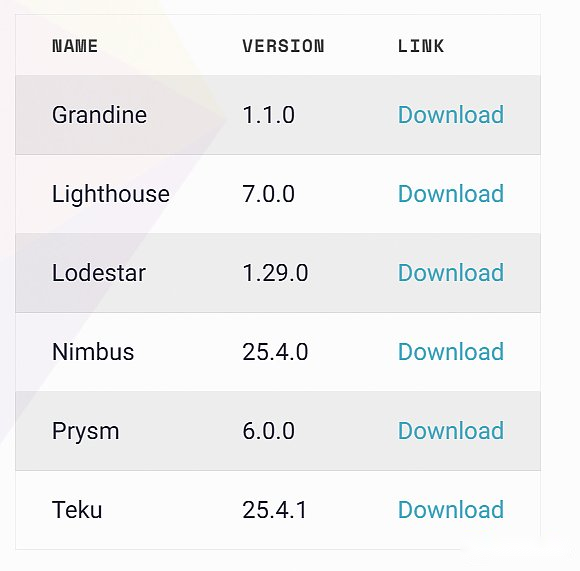
Execution layer version
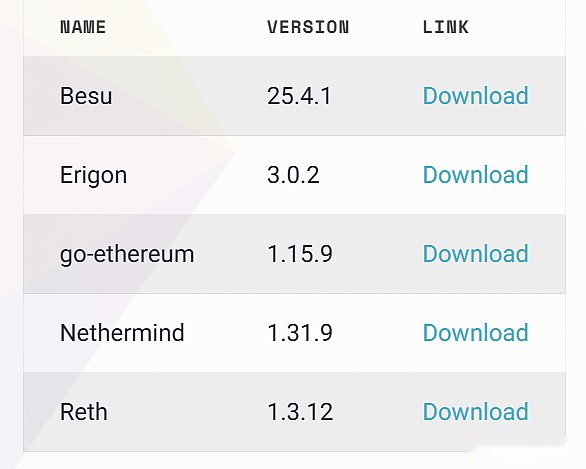
5. Frequently Asked Questions
Q: How does the Ethereum network upgrade work?
answer:Ethereum network upgrade requires node operators to clearly opt-in.Although client developers have reached a consensus on the EIP included in the upgrade, they are not the final decision-makers.
For the upgrade to take effect, validators and non-staking nodes must manually update the software to support the new protocol.
If the Ethereum client used is not updated to the latest version (see above), the connection to the upgraded node will be disconnected when the block is forked, resulting in a network forking.In this case, each subset of nodes is only connected to nodes that remain the same (un) upgraded state.
Although most Ethereum upgrades are uncontroversial and forking are rare, the independent decision of node operators to support upgrades is the core feature of Ethereum governance.
Q: What do I need to do as an Ethereum mainnet user or ETH holder?
answer:In a word: No.
If you use an exchange, digital wallet or hardware wallet, no action is required unless otherwise notified by the service provider.
Q: As a non-staking node operator, what do I need to do?
answer:To ensure compatibility, update the execution layer and consensus layer clients to the versions listed in the table above.
Q: What do I need to do as a pledge?
answer:To ensure compatibility, update the execution layer and consensus layer clients to the versions listed in the table above.Please update the beacon node and the validator client at the same time.
Q: What should I do as an application or tool developer?
answer:Review the EIP included in Pectra to evaluate its impact on the project – this upgrade introduces many exciting new features both at the execution and consensus level!
Q: Why is it named “Pectra”?
answer:The execution layer upgrade continues to use the Devcon city name, and the consensus layer upgrade adopts the constellation name.”Pectra” is a combination of Prague, the venue of Devcon IV, and Taurus’ blue and white superstar Electra.

